David Edwards - Kool Roof Coatings, Polyfresko products - PODCAST TRANSCRIPTION
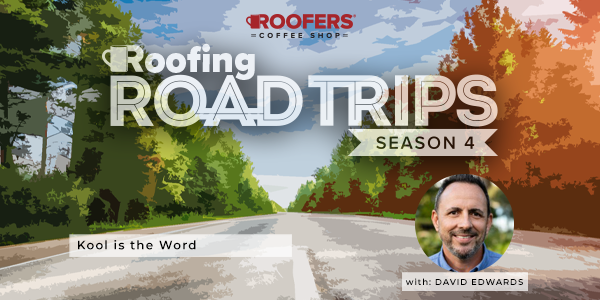
Editor's note: The following is the transcript of an live interview with David Edwards of Polyglass. You can read the interview below or listen to the podcast.
Speaker 1:
Welcome to Roofing Road Trips with Heidi. Explore the roofing industry through the eyes of a long-term professional within the trade. Listen for insights, interviews, and exciting news in the roofing industry today.
Heidi Ellsworth:
Hello and welcome to another Roofing Road Trips from Roofers Coffee Shop. My name is Heidi Ellsworth and I am here today with David Edwards, the commercial system specialist at Polyglass. David, welcome to the show.
David Edwards:
Thank you, Heidi. Very happy to be here.
Heidi Ellsworth:
Oh, I'm just so happy to have you today to talk about what an important topic. What Polyglass is doing with cool roofing, energy. Polyglass has always been a leader. It's so exciting to see all the innovations that continue to come from you all.
David Edwards:
It's so true. It's just embedded in the culture of Polyglass from the beginning and it just continues to this day. So it's a constant pleasure for the company to continue to innovate, especially when it comes to sustainability and protecting the environment and working towards cooler solutions.
Heidi Ellsworth:
Yeah, I've seen it. I've seen it over the years. I've worked with Polyglass a lot over the years and it is just part of your core. It's part of the culture.
Heidi Ellsworth:
Before we dive into all of that, I would love it, David, if you would introduce yourself. Tell us a little bit about yourself, about your position at Polyglass, and then maybe just even overall about Polyglass itself.
David Edwards:
Okay. Hi. Yes. My name is David Edwards, I'm the commercial system specialist, or a commercial system specialist, here at Polyglass. Been here for the past five years and super excited to be a part of this company and this team, just because mainly of the innovations that I've seen come out, even over the last five years. It's been exciting to be associated with it and to watch it unfold. But Polyglass has a long, long history through the decades of innovating. As you mentioned during your opening, the Zanchetta brothers back in the '60s, starting with Luigi and Romano and Antonio Zanchetta, they just really started innovating from day one and it carried all the way through our history's timeline up into the mid 2000s, up into when the Mapei Group acquired Polyglass. So that was a very natural fit as well between the two companies, because of the way that they also look to innovate consistently.
Heidi Ellsworth:
Yeah. What a great merger. And when you look at everything that has come out and how much growth there has been, it's just amazing.
David Edwards:
It is amazing. And again, it's exciting to be a part of and to see things as innovative as CURE technology, patented thin film innovation, that I'm sure we'll talk about here shortly. And as well as the different coatings and cool roof options and solutions that really help towards the overall sustainability, keeping things out of landfill, and also taking up less energy.
Heidi Ellsworth:
So let's talk a little bit about your cool roof coatings.
David Edwards:
Sure. So our cool roof solutions and coatings were introduced around 2008 to the company after Polyglass had already been making premium modified bitumen products. And from there, they just expanded into acrylic coatings, or we expanded into acrylic coatings, and silicone coatings as well. And then also that morphed into a one of a kind, highly innovative, thin film that goes on top of one of our premium membranes.
Heidi Ellsworth:
Let's talk a little bit more about that technology. You just said a minute ago about patents and all those things going on, so what kind of technology is going into all of this?
David Edwards:
Well, the CURE... So let's look at the Polyfresko product, which is a modified bitumen membrane that's got a thin film that's placed on top of it. We call it CURE technology. It's a patented thin film technology. It's incorporated during the manufacturing process. The result's a modified bitumen membrane. It's got greatly enhanced performance benefits, and it doesn't compromise the ease of installation at all. And it gives overall value that you would come to expect from Polyglass. So it's definitely in line with what we stand for.
David Edwards:
So CURE itself is an acronym that stands for ceramic micro spheres, ultraviolet stabilizers, resins, and environmentally friendly. So the benefits that are associated with the CURE technology, when it's placed on top of one of our modified roles, that's our Polyfresko rolls, you get minimal staining on the surface because of this thin film that's applied across the granule. So our modified granulated cap sheets are manufactured in their traditional way. And then there's this part in the manufacturing process where this CURE Technology is applied and it locks in the granules. And this technology was born out of the automotive industry. It's much like the clear coat that you would see in the automotive industry painting process, and it's a very similar type of technology. However, it's now tented white, it's applied to a cap sheet over the granules, locks them in, it reduces staining, has phenomenal reflectivity. I would like to dive into some of those numbers a little bit. Granule adhesion is second to none in the industry and it's revolutionary for sure. And there's nothing quite like it out there in the bright white cap sheet world.
Heidi Ellsworth:
Yeah, that is so cool. Well, and you just said the reflectivity. Go ahead, let's dive into that. I'd love to hear more about it.
David Edwards:
Yeah. So the cool roof ratings council is coolroofs.org, where all of the listings and the directory is located. Basically, this is where all of the testing parameters are set. And then within the directory, all of the findings are listed there. So anybody's able to go to coolroofs.org and look at any product out in the marketplace. And for example, look at the SRI, the solar reflectance index, the initial SRI and the three year SRI, which is oftentimes referred to, for example, in title 24 part six. They point back to the SRI initial and the age weather SRI. So it's an important litmus test as to how well the product is going to work. So when it comes to Polyglass and Polyfresko the numbers, the initial SRI and the three year SRI, exceeds every other modified bright white cap on the marketplace today. And that is just something we're super proud to be able to offer to the marketplace.
David Edwards:
And then there's city, like Los Angeles city, that considers us to be the preferred bright white cap sheet because of those numbers alone. So it's exciting. And we have an initial SRI of 96 and a three year SRI of 83. Again, all of this is easily accessed at coolroofs.org. And all of the radiative property testing always has to be conducted by an accredited, independent testing laboratory and in accordance with their standards, and that would be CRRC-1. So it that's exciting.
David Edwards:
But to take it a step further, our initial SRI and three year SRI is also surpasses more than half of the single-plies on the market. And this is so vital for the industry, because people want the benefits associated with modifieds, the redundancy that comes with it, the durability that comes with it, but they were turning to single-plies at one point in order to get the reflectivity that they desired. So as a marketplace started to create these types of modifieds with bright white options, it became better and better until Polyfresko came and blew everything out of the water. And now our product actually competes or beats more than 50% of single-ply. So it's exciting.
Heidi Ellsworth:
Wow.
David Edwards:
Yes. And one more data point would be the granule adhesion. There is no comparison with granule adhesion. It's because the thin film comes down, locks in all of the granules on top of the sheet, and you get virtually no granule lost when you use the ASTM standard that does the scraping method on top of the sheet. And so it's just a whole different animal. There's nothing else like it on the marketplace. It's a fantastic product.
Heidi Ellsworth:
That is so cool, too. And that is such a problem. You could have the reflectivity early on, but if you're losing granules or if it's getting dirty, or if it's not doing... And for you to have that reflectivity tested three years later, that's really impressive.
David Edwards:
It is so impressive. And, when you go to, for example, the listings in coolroofs.org, and you look at the marketplace itself, you see that not only is it at the top of the list, it's at the top of the list by a decent margin. So it's exciting to see that it's holding those values as well. And granular losses is a very important part of the roofing system.
Heidi Ellsworth:
Right. Well, and I know you're in Florida, I'm in Oregon, but so much starts in California. And we see this all the time. So maybe talk a little bit about how is this holding up, or meeting the requirements of title 24, which everybody hears about, and the 2022 California building energy efficiency standards? How's that all working together?
David Edwards:
They do set the bar, the standard, for energy efficiency. They've definitely got a great thing going on there. And so the 2022 title 24 part six points to the Cool Roof's CRRC listings. So in order to comply with either a performance or prescriptive requirement, performance being a bunch of calculations that are done or prescriptive where you're taking each product and individually making sure that it meets a minimum SRI, aged is going to be the most important out of those two. They point to the CRRC. And so it has to be listed within there, and it's got to have a minimum. So, for example, there's different climate zones in California, and so on. A non-residential building climate zone one through 16, for example. You have to have an SRI aged of 75 or greater. So you can see that, where we're sitting at 83 on our aged we, far exceed that. So it's good to know that this product complies and does a great job meeting all the needs out there. Yes, absolutely.
Heidi Ellsworth:
Yeah. And so what are you seeing? I know you're out of Florida, the Southeast part of the country, but what are you seeing across the country? Not just in California, but is there, this demand is rising for these kind of product?
David Edwards:
The demand is rising because people are starting to realize what the real effect is on the energy savings for the building itself. The owners are requesting this at this point, and the designers are also understanding the importance of designing the systems accordingly. So even outside of areas like California, where their title 24 does exist, this is still a very important for many, many reasons. I personally have witnessed a cool roof go onto a school building that had two chillers running prior to the cool roof going on. And after the cool roof was installed, they were able to shut down a chiller. That was a personal experience that I've seen. So firsthand, what that type of solar reflectance, as it's rejecting the heat, what it does for the energy savings of a building.
Heidi Ellsworth:
Wow. When building owners can see that kind of immediate results, that is really saying something. What are you hearing from building owners out there? I know you just said that they're requesting this. What's some of the feedback you're seeing, not just from building owners, but the facility managers, and also I know you do a lot with roofing consultants?
David Edwards:
Well, so when you're dealing with consultants and they want a design and they want to meet a certain standard, or a certain level, or quality of roof that they want to design, they love the numbers associated with Polyfresko. For example, our modified bitumen with CURE technology on top. Because of that high initial SRI and that three year SRI number, they're very confident to be able to put that on the roof and know that it's going to perform. And then in turn, they're going to get the good feedback from their building owners.
David Edwards:
But you hear from building owners that immediately they notice comfort that changes within the building itself, less energy that's needed in order to run the building itself. And so it's a fantastic thing for the building owners. But also, something important to note, is that as far as maintaining, for example, Polyfresko on a low slope roofing, the staining is a lot more minimal on the surface of the cap sheet. It significantly resists discoloration, and it maintains its integrity because of the stem film technology. So as far as maintaining the roof goes, this can also benefit the building owner as well, as they obviously care for the roof over the life of it.
Heidi Ellsworth:
Yeah. That makes a lot of sense. And I think that's what we hear all the time, too, is they want obviously the right products up front, but they want products that can be maintained, that can have a lot longer longevity for that roof. Because that's also an environmental impact, we don't want to have to tear off all these roofs.
David Edwards:
Absolutely. Yes. And the granule retention itself, and the most critical areas of the roof such as the flashing or different details associated with that, it's important for the lifetime or the longevity of the roof as well.
Heidi Ellsworth:
Yeah. That's cool. I love that. So what is the feedback that you're hearing from roofing contractors out there? How do they like installing it? How do they like the product?
David Edwards:
Installing it is a breeze for contractors every time I talk to them. It's just got that Polyglass high quality modified bitumen that they've come to expect. They know that whether they are installing it as a torch, APP, or SBS, that it's going to perform with the standards that they're used to. And then they also love the fact that Polyfresko comes in a self-adhered version as well. They know how important the self-adhere products are from Polyglass because of the innovations that we've had over the years. So you get not only Polyfresko, the CURE technology that goes on top of it, but you get all the years of innovations that are packed into a product like our self-adhered, like our SEALLap Ultra, our FASTLap at the in lap, our dual compound technology where we're able to take a true APP or true SPS on the top side of the reinforcement and then put a self-adhered compound on the bottom side.
David Edwards:
Not only are we able to do that with our SEALLap Ultra, we're able to do a scrape and apply where we can literally, during the process of manufacturing, scrape off the side lap and apply our self-adhere modified on that side lap so that we get an instantaneous monolithic bond at the most critical portion of the roofing system down the side lap. So it's a game changer. So now you've taken something that Polyglass is the very forefront of the industry with regards to the self-adhered, and then you've supercharged it by giving a Polyfresko option in self-adhered. So we hear nothing but glowing feedback from our contractors, from our torching Polyfresko, but certainly from our self-adhered version.
Heidi Ellsworth:
Well, and self-adhered is such a progressive product. You don't have the fumes, you don't have the fire flame. And I'm not saying those are bad, I'm just saying self-adhered just hits so many of the right buttons.
David Edwards:
It does, it hits so many of the right buttons. And with these features that we're able to provide during the manufacturing process, such that I mentioned about the side lap, the in lap, the split release film on the backside, all of the innovations and patent and technologies that are associated with it. It's a phenomenal product. And you always know, this is what I love about self-adhere, that you have 100% adhesive properties on the backside of the roll, which you're never going to get with any other method of application, as you're relying at that point on the installer's ability and all of the environmental conditions on the rooftop.
David Edwards:
We take that out of the equation with our self-adhered, and we're able to ensure in the manufacturing process we give a hundred percent adhesive properties to the backside of the roll. So I love it for that reason. I love it for, like you said, that the no VOCs, just how great it sticks and how well it seals at the side laps and in laps. And you're not walking around in adhesives and goops and all over the cap sheets and making a mess either. I just think it's fantastic.
Heidi Ellsworth:
Yeah. You don't want to mess up that pretty white roof.
David Edwards:
No. And speaking of that, the CURE that is put on top of our Polyfresko, we also have available that product for the rooftop for the guys when they're installing this product, to be able to touch up with it, or so forth. And then on top of that, which is such a great part of Polyglass's line up and innovation, is we have a flashing compound called PolyFlash 1C. It's a one-part flashing compound. It is unlike other products on the market, but most importantly, with regards to what we're talking about today, PolyFlash 1C is a modified silane, and it's bright white.
David Edwards:
So instead of being like a polyurethane bitumen, or a petroleum asphalt urethane, where these products all brown, and then you're hoping to be able to find another product that is compatible that can go on top and turn it white in order to ensure a completely white surface, with PolyFlash 1C, as you're flashing all of your penetrations and doing all of your other flashing needs across the roof, that you're getting a bright white flashing compound as it sits. And it's going to stay that way for the life of the roof. It's a fantastic product, and it's the most perfect marriage for Polyfresko.
Heidi Ellsworth:
That's awesome. Wow. So, we've... So many things, the cool roof coatings, the Polyfresko products, the CURE, the flashing, you just brought it all together. So really building owners... Contractors are able to give all the different alternatives exactly what they need for those energy-efficient roofs.
David Edwards:
It's so true. It's exciting to be a part of this great company because of these reasons. And Polyglass just doesn't stop evolving and innovating. And I love to witness it and I love to be a part of it in my small slice of it.
Heidi Ellsworth:
I love it.
David Edwards:
So it's fantastic.
Heidi Ellsworth:
Well, and you know what's coming up, is the FRSA 100th anniversary trade show in July. You guys are going to have a nice big booth there, so people can come by who are going to be at that show and see these products and get hands on, right?
David Edwards:
100%. Yes, absolutely. They will be highlighted at the booth, I'm sure. Our marketing team is second to none with how they set things up over there and having, having everything available to see and to discuss right there on the floor.
Heidi Ellsworth:
And sometimes they even have champagne in the-
David Edwards:
I know, they're always... Yeah. You talk about innovating, our marketing team is innovating for sure. Yeah. They will find a way to drive the traffic and make it a good time.
Heidi Ellsworth:
I know I love you guys'... Everything you do is awesome. And I do want to point out, too, that I know you guys will also be at the Western State Show. So for all you west coasters listening to this, that's another show in September where you can get hands on, because this is innovation happening as we're watching. And really solving the problems out there on the roofs for the building owners, for the contractors, and for, overall, for our environment. So, David, thank you so much for being here today. What a great discussion. And I learned so much.
David Edwards:
So happy to have been invited. My pleasure. I look forward to seeing you out on a trade show here soon, or just out in general. So thank you very much. We appreciate it.
Heidi Ellsworth:
Thank you, David. I will see you at the Florida show, because I'm going to make sure I spend a little time in that Polyglass booth. I love it. So thank you again, and thank all of you for listening. We love these Roofing Road Trips, so much to learn, so much about roofing that I keep learning every single day. So we are so thankful that you come in, you listen to our podcast. Don't miss a single one. You can find them on rooferscoffeeshop.com under the RLW navigation or easily on your favorite podcast channel. Just type in Roofer's Coffee Shop, find us,, subscribe and hit those notifications so you don't miss a single one. And we will be seeing you on the next Roofing Road Trips.
Speaker 1:
Make sure to subscribe to our channel and leave a review. Thanks for listening. This has been Roofing Road Trips with Heidi, from therooferscoffeeshop.com.
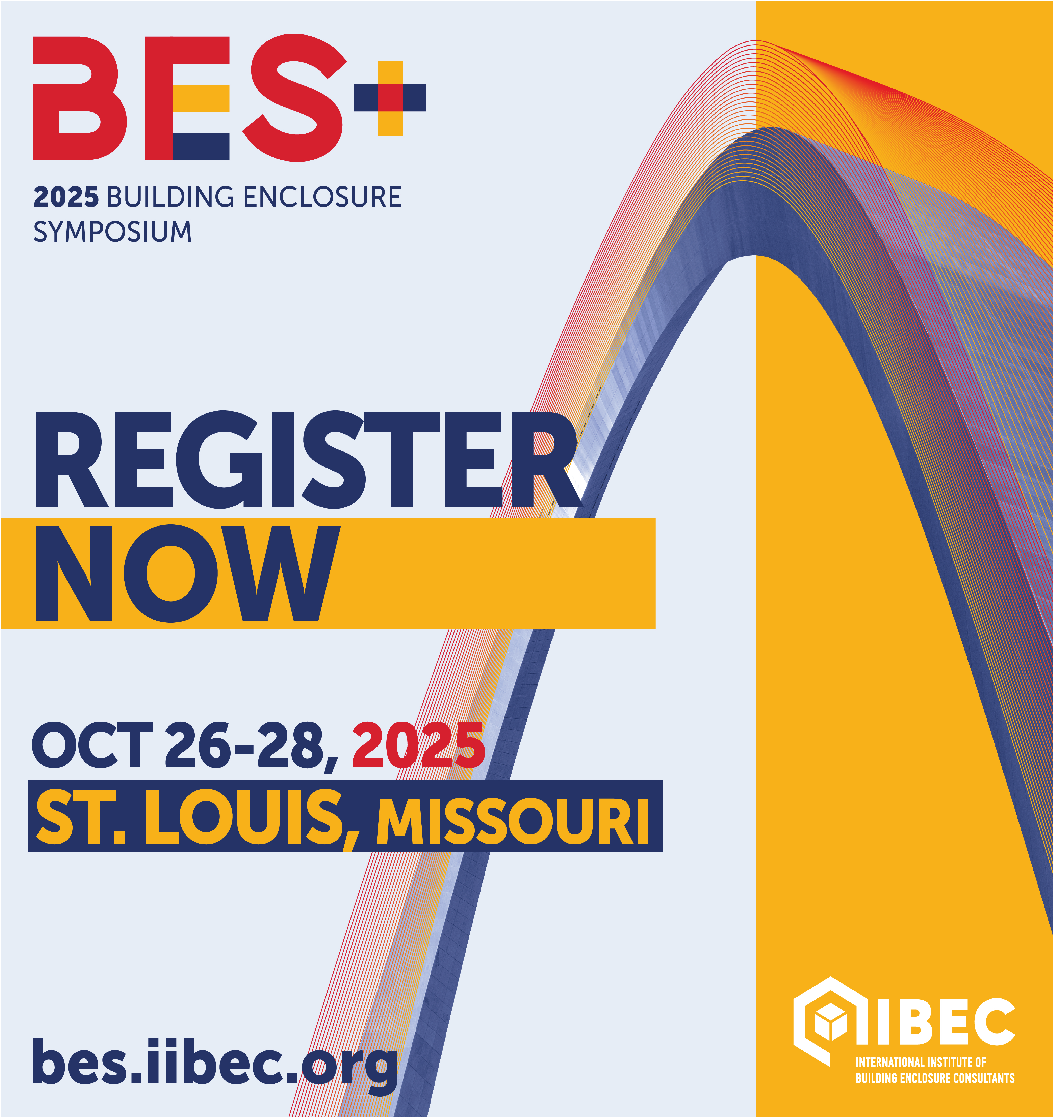

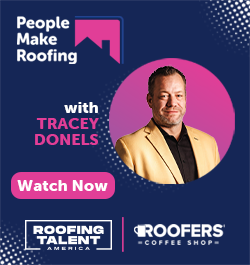
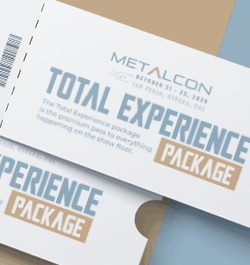









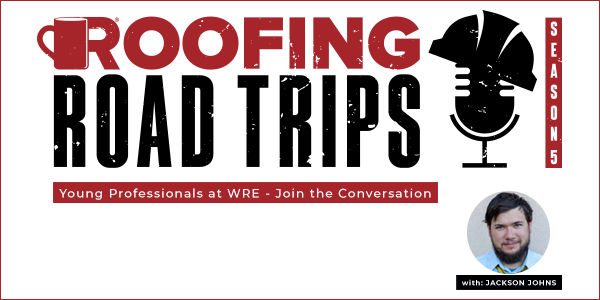
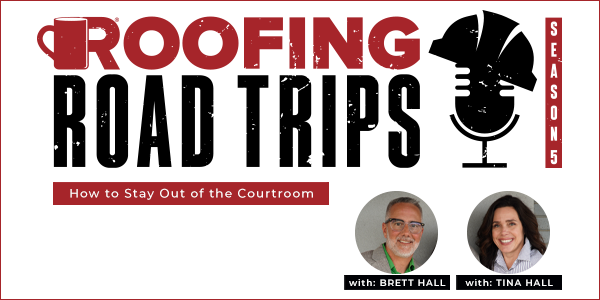


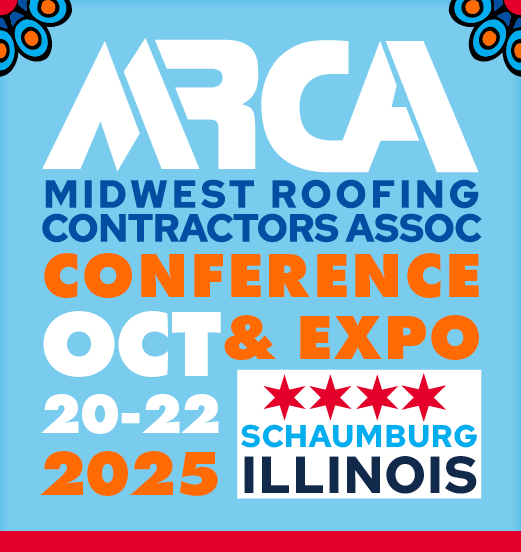



Comments
Leave a Reply
Have an account? Login to leave a comment!
Sign In